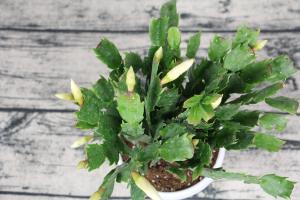When to Plant Tomatoes in Minnesota
Tomatoes are a favorite summer crop for many home gardeners in Minnesota. However, with the state's unpredictable weather, it can be tricky to determine the best time to start planting. In this article, we'll cover everything you need to know to grow delicious and healthy tomatoes in Minnesota.
Understanding Minnesota's Growing Season
Minnesota is known for its long and cold winters, which can make it difficult to grow certain crops. However, the state also boasts a relatively long growing season, which typically lasts from late May through September.
It's important to note that the growing season can vary depending on location and weather conditions, so it's important to keep an eye on local weather forecasts and plan accordingly.
Choosing the Right Tomato Varieties
When it comes to planting tomatoes in Minnesota, it's important to choose varieties that are well-suited for the region's climate. Indeterminate varieties, which continue to grow and produce fruit throughout the season, are typically the best choice for Minnesota gardeners.
It's also a good idea to select varieties that are disease-resistant, as Minnesota's damp and humid weather can make tomatoes susceptible to fungal and bacterial infections. Popular disease-resistant varieties include 'Celebrity', 'Better Boy', and 'Big Boy'.
Preparing Your Soil
Tomatoes thrive in soil that is rich in organic matter and has a slightly acidic pH. Before planting, it's important to prepare your soil by incorporating plenty of organic materials such as compost, aged manure, or other soil amendments.
You may also need to test your soil's pH and adjust it if necessary. Most tomatoes prefer a pH between 6.0 and 6.8, so if your soil is too alkaline, you may need to add sulfur or other acidic amendments.
Planting Your Tomatoes
In Minnesota, it's generally best to wait until late May or early June to start planting tomatoes. This allows for the soil to warm up sufficiently and helps to avoid any late-season frosts that can damage or kill your plants.
When planting your tomato seedlings, space them about three feet apart to allow for good air circulation and room for growth. Be sure to plant them at a depth that covers the root ball and the lower leaves, but keep the top leaves above the soil line.
Caring for Your Tomatoes
To keep your tomatoes healthy and productive, it's important to provide them with proper care throughout the growing season. This includes regular watering, fertilization, and pest control.
Tomatoes need about an inch of water per week, either from rainfall or irrigation. It's important to water deeply and be sure to water in the morning to give the leaves and stems time to dry off before the cooler evening temperatures arrive.
Fertilizing your tomatoes regularly can help to provide them with the nutrients they need to grow strong and healthy. Use a balanced fertilizer such as 10-10-10 or 5-10-10 and apply it according to the package instructions.
Finally, be sure to monitor your plants for any signs of pests or diseases. Common tomato pests in Minnesota include aphids, spider mites, and hornworms. If you notice any problems, try to identify the pest or disease and treat it appropriately.
Harvesting and Saving Seeds
As your tomatoes begin to ripen, be sure to harvest them regularly to encourage more fruit production. Most tomatoes will be ready to harvest about 60-80 days after planting.
If you want to save seeds from your tomatoes for future use, simply scoop out the seeds and pulp from a ripe tomato, place them in a jar or container, and allow them to ferment for a few days. After fermentation, rinse the seeds and dry them on a paper towel. Store the dried seeds in a cool, dry place until you're ready to plant them.
Conclusion
Growing tomatoes in Minnesota can be challenging, but with the right planning, soil preparation, and care, you can enjoy a bountiful harvest of juicy and delicious tomatoes. Remember to choose disease-resistant varieties, plant at the right time, and provide your plants with proper care throughout the growing season. With a little effort and dedication, you'll be enjoying fresh and flavorful tomatoes all summer long!

 how many times do yo...
how many times do yo... how many planted tre...
how many planted tre... how many pine trees ...
how many pine trees ... how many pecan trees...
how many pecan trees... how many plants comp...
how many plants comp... how many plants can ...
how many plants can ... how many plants and ...
how many plants and ... how many pepper plan...
how many pepper plan...































